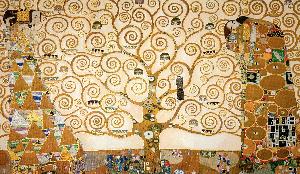Artiest: Gustav Klimt
Stijl: Art Nouveau
Tatum: 1907
Trootte: 138 x 138 cm
Techniek: Oil On Canvas
This painting, which took three years to complete, was commissioned by the wealthy industrialist Ferdinand Bloch-Bauer, who made his money in the sugar industry. Ferdinand Bloch-Bauer favored the arts, especially Klimt, and commissioned him to complete another portrait of his wife Adele in 1912. Adele Bloch-Bauer was the only person to be painted twice by Klimt. This painting is perhaps most famous not for its artistic quality, but because of its scandalous history since inception. Upon her death, Adele Bloch-Bauer wished the painting to be given to the Austrian State Gallery, but it was seized by advancing German forces in World War II. In 1945, Ferdinand Bloch-Bauer designated the paintings to be the property of his nephew and nieces, including Maria Altmann. Nonetheless, the Austrian government retained ownership of the painting, and was not returned to the Altmann family until 2006 after a long court battle. The painting was then sold at auction for $135 million dollars, which at that time was the highest price paid at auction for a painting. It is now displayed the Neue Art Gallery in New York.
Artiest |
|
|---|---|
Download |
|
Tachtigingen |
Gratis voor niet-commercieel gebruik. Zie hieronder. |
Gustav Klimt – Meest bekeken kunstwerken
|
This image (or other media file) is in the public domain because its copyright has expired. However - you may not use this image for commercial purposes and you may not alter the image or remove the watermark. This applies to the United States, Canada, the European Union and those countries with a copyright term of life of the author plus 70 years.
|















 Note that a few countries have copyright terms longer than 70 years: Mexico has 100 years, Colombia has 80 years, and Guatemala and Samoa have 75 years. This image may
not be in the public domain in these countries, which moreover do not implement the
Note that a few countries have copyright terms longer than 70 years: Mexico has 100 years, Colombia has 80 years, and Guatemala and Samoa have 75 years. This image may
not be in the public domain in these countries, which moreover do not implement the